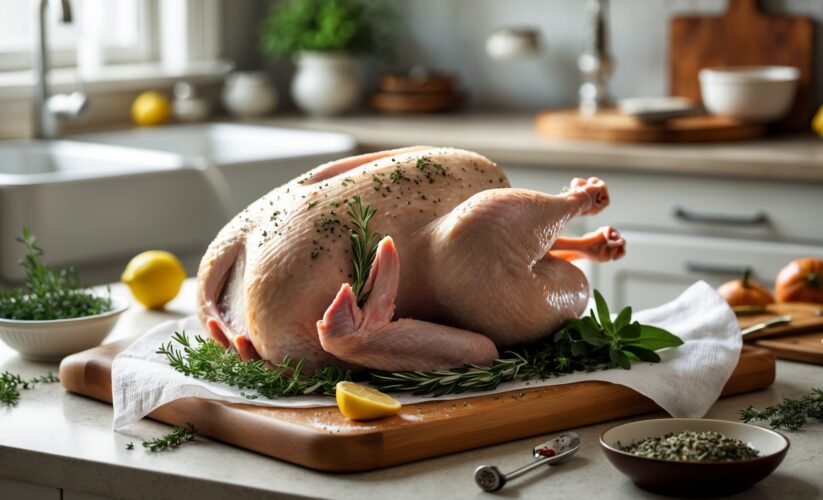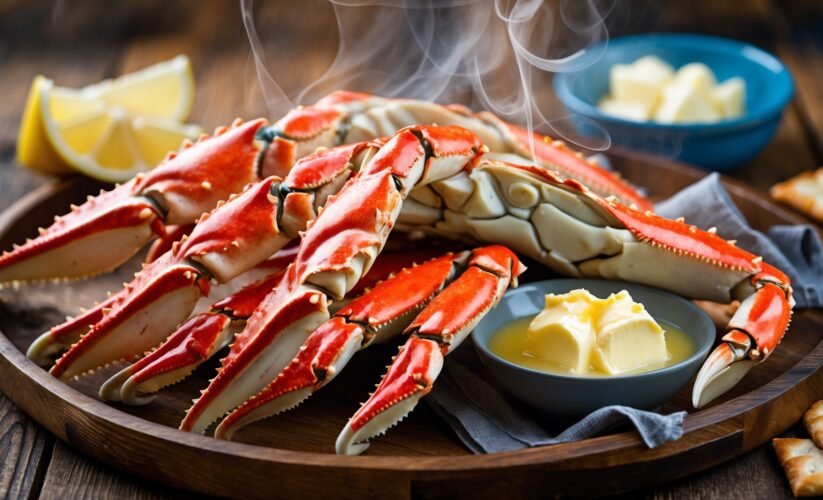
How to Clean a Turkey Before Cooking
How to Clean a Turkey Before Cooking: A Complete Guide to Safe and Delicious Preparation
Cleaning a turkey before cooking is a crucial step in preparing a safe and delicious holiday meal. Whether you’re roasting, frying, or brining your Thanksgiving turkey, proper cleaning ensures that harmful bacteria are minimized, and your bird is ready for seasoning and cooking. In this guide, we’ll walk you through the best practices for cleaning a turkey, including tips from the USDA (United States Department of Agriculture) to keep your kitchen safe and your turkey flavorful.
Why Cleaning a Turkey Matters
Raw turkey, like all poultry, can carry harmful bacteria such as Salmonella and Campylobacter. These bacteria can cause foodborne illnesses if not handled properly. Cleaning your turkey correctly helps prevent cross-contamination in your kitchen and ensures your holiday feast is safe for everyone. According to the USDA, improper handling of raw poultry is one of the leading causes of food poisoning, so it’s essential to follow safe practices.
What You’ll Need
- A whole turkey (fresh or thawed)
- A clean kitchen sink
- Paper towels
- A cutting board (dedicated to raw poultry)
- Hot soapy water
- A meat thermometer
- A roasting pan or pot (for brining)
- Fresh herbs or seasonings (optional)
Step-by-Step Guide to Cleaning a Turkey
1. Thaw Your Turkey Safely
If your turkey is frozen, make sure it’s fully thawed before cleaning. The safest way to thaw a turkey is in the refrigerator. Place the turkey on a tray or in a pot with cold water to catch any drips. Never thaw a turkey on the counter, as this can promote bacterial growth.
2. Wash Your Hands and Prep Your Workspace
Before handling the turkey, wash your hands thoroughly with soapy water. Clean your kitchen sink, countertops, and cutting boards with hot, soapy water to disinfect them. This step is critical to prevent the spread of bacteria.
3. Remove the Packaging
Take the turkey out of its packaging over the sink to avoid splashing. Discard the packaging and any giblets or neck that may be inside the cavity. These can be saved for gravy or stuffing if desired.
4. Rinse the Turkey (Optional)
According to the USDA, rinsing a turkey is not recommended because it can spread harmful bacteria through splashing. If you choose to rinse your turkey, do so carefully under cold water, making sure to clean the cavity and remove any excess moisture with paper towels.
5. Pat the Turkey Dry
Use paper towels to remove excess moisture from the turkey’s surface. This step is especially important if you plan to roast or fry the turkey, as excess moisture can prevent the skin from crisping up.
6. Check for Remaining Feathers or Residue
Inspect the turkey for any leftover feathers or residue. Use tweezers to remove any feathers and wipe the skin with a damp paper towel if needed.
7. Brine the Turkey (Optional)
If you’re brining your turkey, make sure to remove any excess moisture with paper towels before placing it in the brine. Whether you use a wet brine or dry brine, ensure the turkey is fully submerged or coated. After brining, rinse the turkey (if using a wet brine) and pat it dry again.
8. Season and Prepare for Cooking
Once your turkey is clean and dry, season it inside and out with fresh herbs, spices, or your favorite rub. If you’re stuffing the turkey, do so just before cooking to avoid bacterial growth.
Safety Tips for Handling Raw Turkey
- Avoid Cross-Contamination: Use separate utensils and cutting boards for raw turkey and other foods like fresh produce. Wash anything that has touched raw poultry with hot, soapy water.
- Cook to the Right Temperature: Use a meat thermometer to measure the internal temperature of the turkey. The thickest part of the thigh should reach 165°F, and the turkey breast should also be safely cooked.
- Clean Up Thoroughly: After handling the turkey, wash your hands, utensils, and countertops with hot, soapy water. Disinfect surfaces to prevent the spread of bacteria.
FAQs About Cleaning a Turkey
Do You Need to Wash a Turkey Before Cooking?
According to the USDA, washing a turkey is not recommended because it can spread harmful bacteria. Instead, focus on proper handling and cooking techniques.
Can You Clean a Turkey the Night Before?
Yes, you can clean and season your turkey the night before cooking. Store it in the refrigerator, covered, to keep it fresh.
How Do You Know When the Turkey is Fully Cooked?
Use a food thermometer to check the internal temperature. The turkey is fully cooked when the thickest part of the thigh reaches 165°F.
Cleaning a turkey before cooking is an essential step in preparing a safe and delicious holiday meal. By following these steps—thawing safely, handling raw poultry carefully, and cooking to the right temperature—you can ensure your Thanksgiving turkey is both flavorful and safe to eat. Remember, the key to a successful turkey is not just in the roasting or frying but in the preparation. Happy cooking!



